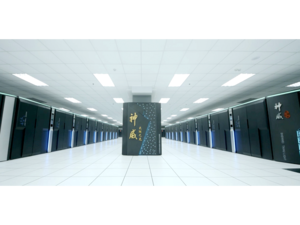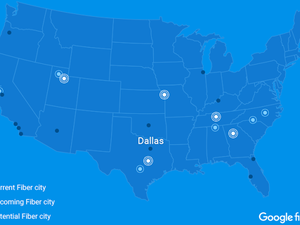Fifteen years ago, China decided to build homegrown processors for PCs, servers, and supercomputers. Now the country's latest chip is powering the world's fastest computer.
The Sunway TaihuLight at the National Supercomputing Center in Wuxi, China, was ranked as the world's fastest supercomputer on a Top500 list published on Monday. It runs on a homegrown ShenWei processor and is capable of 93 petaflops (million billion floating point operations per second) of sustained performance. Its peak performance can reach 125.4 petaflops.
The supercomputer is a big statement that China doesn't have to rely on U.S. technology for its IT needs. China used Intel's chips to build the world's second fastest supercomputer, the Tianhe-2, which until recently held the top spot on the Top500 list.
The U.S. in April last year banned the export of some Intel Xeon chips to China for use in supercomputers, with the government concerned the chips would be used in activities against U.S. interests. The Tianhe-2 and Tianhe-1A were allegedly used in nuclear weapon tests, which partly spurred the export ban.
The embargo on the Xeon chips did not affect the building of the Sunway TaihuLight supercomputer. China already had set its sights on building the first supercomputer that could deliver a performance of more than 100 petaflops, Top500 wrote.
But the embargo did strengthen the resolve and precipitated efforts of China to build its own homegrown chips.
For the Chinese, the development of indigenous IT equipment, especially for high-performance computing, is a matter of priority and national pride, said Nathan Brookwood, principal analyst at Insight 64.
"They are trying to show their moxie here, and they are doing a pretty good job," Brookwood said.
Developing a high-tech chip gives China bragging rights to stand up against countries and top chip-makers like Intel. It's also a matter of cost, Brookwood said.
"China spends more on IT equipment than oil," Brookwood said.
The home-grown Chinese chip also gives the country some weight and bargaining power against top chip makers Intel, IBM, and Qualcomm, who are trying to push their own chips to server makers in China.
The ShenWei processor may not make it to servers used in data centers, but may be a bargaining chip for China to use against companies like Intel and Qualcomm to make concessions as a way to gain business in the country.
A supercomputer with a homegrown Chinese chip, the Sunway BlueLight MPP, running an early version of the ShenWei processor, entered the Top500 list in November 2011 at number 14. It was the first Chinese supercomputer with a homegrown chip to enter the Top500 list and was ranked at 119 on the list released on Monday.
China, the U.S., Japan, and European countries are in a constant race to build the world's fastest computer. China had 167 supercomputers on the Top500 list, beating the U.S., which had 165.
The Sunway TaihuLight has the ShenWei SW26010 processor, a monster 260-core chip. Each chip delivers a performance of 3 teraflops, which Top500 rated as being on par with Intel's latest Xeon Phi chip code-named Knights Landing. That chip is rated as one of the company's fastest.
The Chinese supercomputer has a staggering 10,649,600 cores over 40,960 nodes. It was developed by the National Research Center of Parallel Computer Engineering and Technology.
With Sunway TaihuLight, China is also the first country to make a supercomputer that passes 100 petaflops in performance. Countries are in a race to make a computer that can deliver a performance of an exaflop, or a million trillion calculations per second, which is expected to be reached sometime after 2020.
There's still is some mystery to China's latest homegrown chip. It is a 64-bit RISC processor, which Top500 speculates is based on the DEC Alpha architecture. The supercomputer has 1.3 petabytes of the older DDR3 memory, and uses 15.3 megawatts of power, making it more power-efficient than the number two supercomputer Tianhe-2, which uses 17.8 megawatts. It also has a homegrown interconnect, though its based on PCI-Express 3.0
China over years has developed a chip called Godson, which has been used in PCs, though progress has seemingly stalled.














